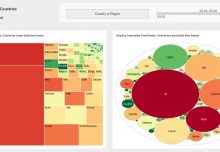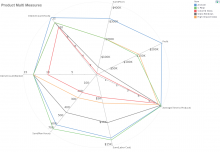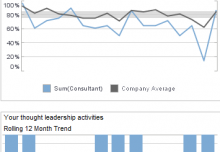 This post is the sixth in a series discussing machine learning examples for a mobile app provider. The link to the full case study can be found at the end of the post. The first post can be found at https://www.inetsoft.com/blog/machine-learning-concepts-defining-churn-predictive-metrics/
This post is the sixth in a series discussing machine learning examples for a mobile app provider. The link to the full case study can be found at the end of the post. The first post can be found at https://www.inetsoft.com/blog/machine-learning-concepts-defining-churn-predictive-metrics/
Machine Learning Algorithm Primer for Non-Techies: Number 1 – Learning by Example
Learning by example is also often called supervised learning. Supervised means the machine learning algorithm learns from examples of correct predictions given to it by a human. Once learned, the model can take an input (observation), examine its attributes (features), and output a new attribute for the observation. There are two types of supervised learning: classification and regression.
Classification is the type illustrated in the churn prediction use case that we have been discussing. In the classification model, a user is , assigned a predefined label (churn or no-churn). There many different classification algorithms. Some are very simple, like naïve Bayes. A simple algorithm runs fast and surprisingly outperforms complex ones in many real world cases. Here is a list of common classification algorithms:
- linear SVMs (support vector machines)
- logistic regression
- decision trees
- random forests
- gradient-boosted trees
- naive Bayes
Regression is the second type of supervised learning. Unlike classification, the output for a regression algorithm is a numeric value. For example, given a person’s height and other features predict the person’s weight. Common regression algorithms include:
- linear least squares
- Lasso
- ridge regression
- decision trees
- random forests
- gradient-boosted trees
- isotonic regression
Note that classification and regression types share many algorithms.
While you might never need to understand the technical details of these algorithms, you will have heard their names, and most importantly you can understand the type of machine learning model to use. And the bottom line is if you have a set of data with output produced by a human, machine learning can automate the job for you.
The full case study can be found at https://insidebigdata.com/2017/04/14/predicting-mobile-app-user-churn-training-scaling-machine-learning-model/
The next post in the series is at: https://www.inetsoft.com/blog/machine-learning-algorithm-primer-non-techies-machine-discoveries/







